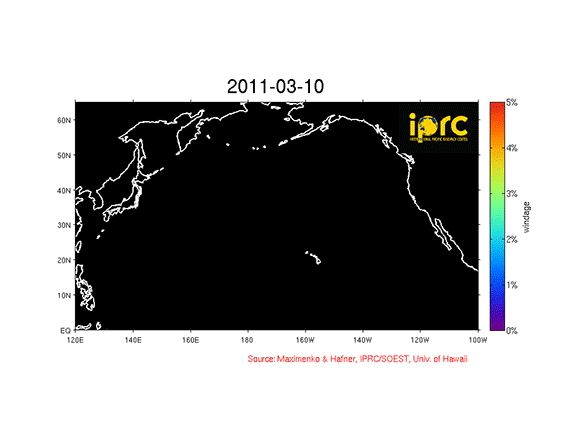
The amount of debris in the Pacific Ocean
is growing exponentially, becoming more and more hazardous and harmful to
marine life and therefore also to our ocean food source. Measuring and tracking
the movements of such debris are still in their infancy. The driftage generated
by the 2011 tsunami in Japan gave University of Hawaii scientists Nikolai
Maximenko and Jan Hafner a unique chance to learn about the effects of the
ocean and wind on floating materials as they move across the North Pacific
Ocean.
Shortly after the tsunami struck,
Maximenko and Hafner used the IPRC Ocean Drift Model to predict where the
debris from the tsunami would go. Their computer model is based on trajectories
of real satellite-tracked drifting buoys and satellite-measured winds.
The model has now been charting
the possible paths of the tsunami driftage for nearly 3 years. The scientists
have made a major improvement to the initial model: it now accommodates objects
of different shapes and buoyancies that expose different amounts of surface to
the wind and travel at different speeds and different trajectories. The model
therefore now includes different levels of wind-forcing, simulating the
movement of different types of floating debris.
No formal marine debris observing
systems exist to verify the model simulations. The model paths for tsunami
debris, however, agree with reports of such debris washing up on the shores of
Oregon, Washington, Alaska, and the Hawaiian Islands, as well as with
observations by sailors crossing the North Pacific.


No comments:
Post a Comment